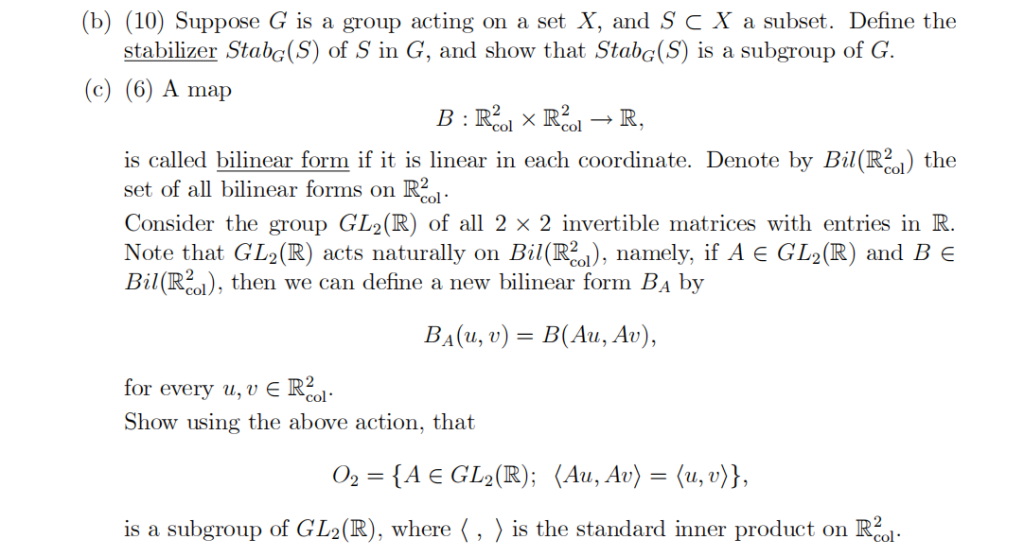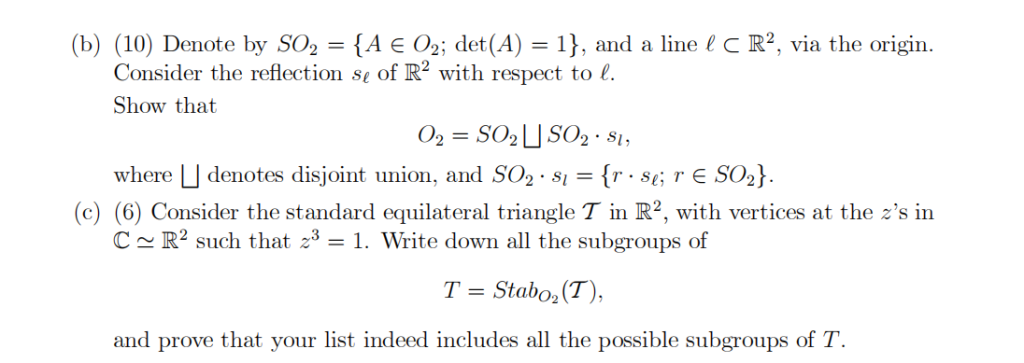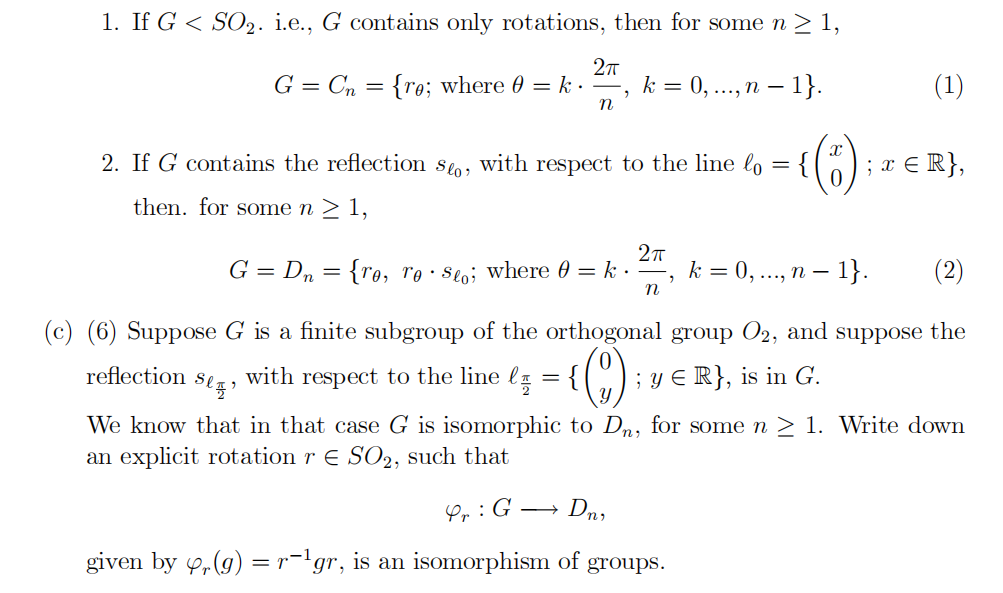数学线性代数代写 Math 541代写 线性代数代写 数学作业代写
716Math 541 HW1 - Linear Algebra Refresher 数学线性代数代写 Remarks: A) Definition is just a definition, there is no need to justify or explain it. B) Answers to questions with proofs should b...
View detailsSearch the whole station
数学考试代考 Remarks. Do only five of the questions below. Definition (subsections (a)) is just a definition and there is no need to justify it. So just write it
0) If it is a computation start by writing the answer.
i) Main points that will appear in your explanation or proof or computation.
ii) The actual explanation or proof or computation.
The test
(a) (4) Suppose V is a finite dimensional vector space over R, with an inner product 〈 ; 〉. For a subspace W V , define its orthogonal complement W⊥ ⊂V .
(b) (10) Explain what does it mean for vectors w1 , … , wm ∊ W, to be orthogonal basis. Use such basis to show that:
1. dim(V ) = dim(W) + dim(W⊥):
2. V = W ⊕ W⊥, where ⊕ denotes direct sum of two spaces.

(a) (4) Define the notion of a group.
(b) (10) Let X be a set. Show that
Aut(X) = σ : X → X; σ is invertibleg.
is in a natural way a group, with the operation of composition ∘ of functions, and with identity the map id(x) = x for every x ∊ X :

(a) (4) Suppose G is a group and H ⊂ G, a subset. Define when we say that H is a subgroup of G.

(c) (6) Consider the group (Z , + , 0) of integers. Show that if H < Z, then there is an integer d ≥ 0, such that H = dZ = {dk ; k ∊ Z }. (Show that, if H ≠ 0 ; then the smallest d > 0, that belong to H does the job. Recall also that for such d > 0, if n > 0, then there exist unique integers q ; r≥0, with 0 ≤ r < d, such that n = qd + r.).
(a) (4) Define the notion of a group G acting on a set X.

(a) (4) Define the orthogonal group O2 < GL2(R).

(a) (4) Define when two groups (G , *G ,1G) and (H , *H , 1H) are isomorphic.
(b) (10) Prove the following theorem:
Theorem. Suppose G is a finite subgroup of the orthogonal group O2. We have,

(a) (4) Define when a map φ : G →H is an homomorphism.
(b) (10) Suppose φ : G →H is an homorphism. Consider the collection
Ker(φ) = {g ∊ G ; φ(g) = 1H } ⊂ G,
called the kernel of φ.
Show that:
1. Ker(φ) a subgroup of G.
2. φis one-to-one if and only if Ker(φ) ={1G } .
(c) (6) Denote by C* the collection of all non-zero complex numbers. It is a group under usual multiplication · of complex numbers. In addition consider the collection R of real numbers. It is a group under the usual addition + of real numbers.
Consider the mapping
φ : R→C* ,
given by φ(θ) = e2πiθ = cos(2πθ) + isin(2πθ); for θ ∊ R.
1. Show that φis homorphism.
2. Show that Ker(φ) = Z and Im(φ) = S1 = {z ∊ C* ; |z|= 1}the unit circle in the plane.

更多代写:CS加拿大代修网课一门多少钱 托福在家考作弊 英国机械工程代考 教育学论文作业代写 加拿大商科论文代写 代写essay标题
合作平台:essay代写 论文代写 写手招聘 英国留学生代写
Math 541 HW1 - Linear Algebra Refresher 数学线性代数代写 Remarks: A) Definition is just a definition, there is no need to justify or explain it. B) Answers to questions with proofs should b...
View detailsMT4003 Groups 数学群代考 EXAM DURATION: 2 hours EXAM INSTRUCTIONS: Attempt ALL questions. The number in square brackets shows the maximum marks obtainable EXAM DURATION: 2 hours EX...
View detailsFinal Exam - MATH 237 数学微积分代写 Question 2 (i) Cartesian coordinates (ii) Cylindrical coordinates (iii) Spherical coordinates (b) Evaluate one of the three integrals from part (a). Ques...
View detailsMT5823 Semigroup theory 半群理论代考 A block group is a semigroup S such that for every s ∈ S there exists at most one t ∈ S where sts = s and tst = t. 1. (a) State the definition of EXAM ...
View details